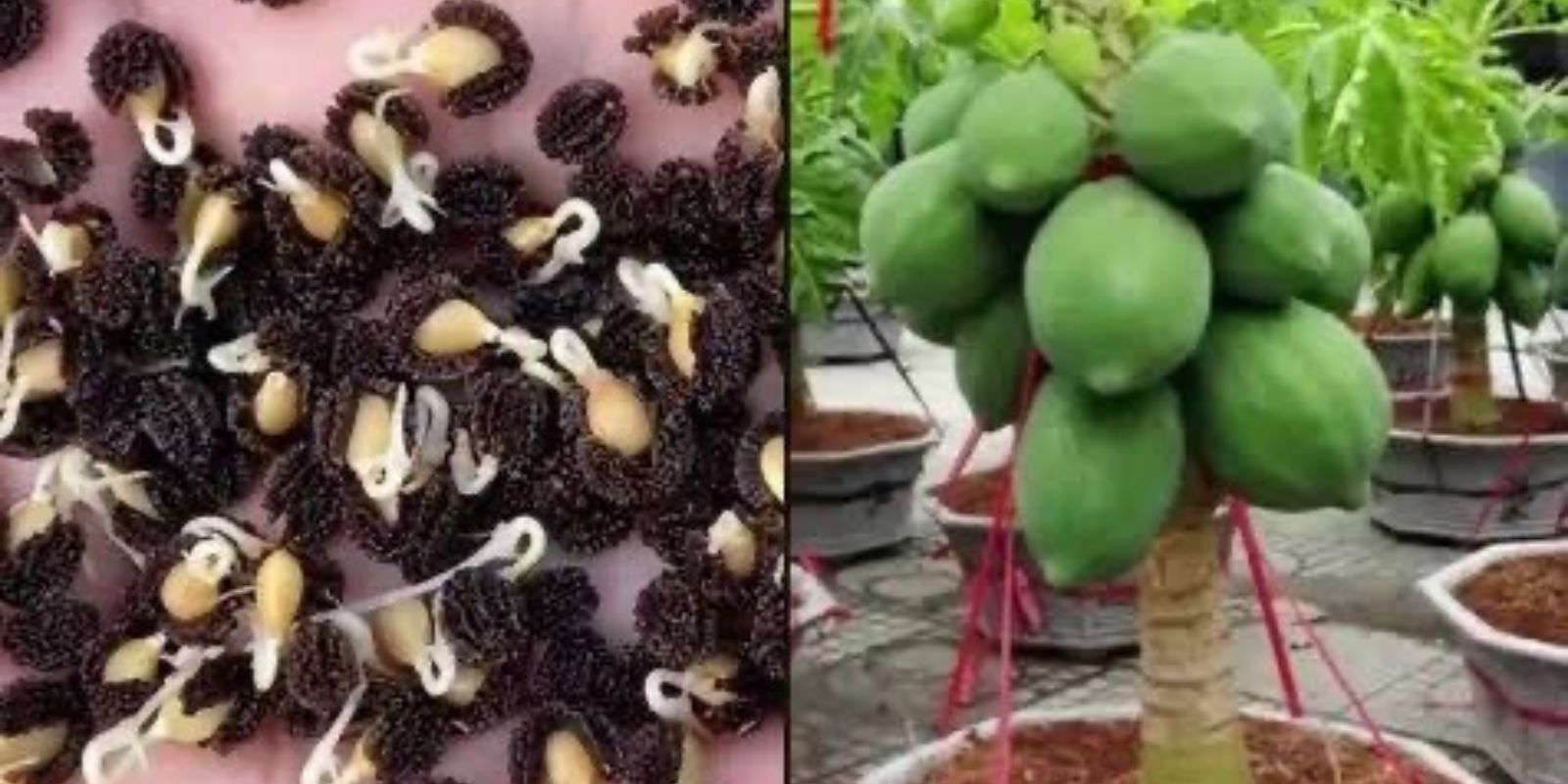Papayas are tropical fruits known for their sweet taste, juicy flesh, and incredible health benefits. While many believe this exotic fruit can only thrive in large gardens or farms, papayas can be successfully grown in pots with proper care and attention. This article will guide you step-by-step on how to grow papayas at home in pots, ensuring a lush harvest of this tropical delight.
Why Grow Papayas in Pots?
Growing papayas in pots offers numerous advantages:
- Space Efficiency: Perfect for urban homes, small backyards, or balconies.
- Mobility: Easily move the plant to ensure maximum sunlight exposure.
- Controlled Environment: Easier to manage soil quality, pests, and watering needs.
- Year-Round Harvest: With proper care, potted papayas can yield fruit continuously.
Let’s dive into the process of growing your papaya tree and unlocking its full potential.
Step 1: Selecting the Right Pot and Location
The foundation of successful papaya cultivation begins with choosing the ideal container and placement.
- Pot Requirements:
Select a large pot with a minimum capacity of 15–20 gallons (approximately 57–75 liters). Papayas have deep roots, so ensure the pot is at least 18–24 inches deep and has adequate drainage holes to prevent waterlogging. - Placement:
Papayas are sun-loving plants. Choose a location where your pot will receive at least 6–8 hours of direct sunlight daily. Balconies, terraces, or south-facing windows are great options.
Step 2: Choosing the Right Papaya Variety
Not all papayas are suitable for container gardening. Opt for dwarf or miniature varieties that are well-suited for pots, such as:
- ‘T.R. Hovey’: A dwarf variety that thrives in containers and produces small, sweet fruits.
- ‘Solo’: Known for its compact size and high fruit yield.
These varieties grow smaller and are easier to manage than standard papaya trees.
Step 3: Preparing the Soil and Planting Papaya
The right soil mix and planting technique set the stage for healthy growth.
- Soil Preparation:
Use a well-draining potting mix enriched with organic compost or manure. You can prepare your own mix by combining equal parts garden soil, sand, and compost. Add perlite or vermiculite to enhance aeration and drainage. - Planting Seeds or Seedlings:
- From Seeds: Extract seeds from a ripe papaya, clean them, and allow them to dry for a day. Soak them in water for 24 hours before planting to boost germination.
- From Seedlings: Purchase healthy, disease-free seedlings from a nursery. Sow seeds or transplant seedlings 2.5 cm deep into moist soil. Space seeds about 2–3 inches apart if planting multiple seeds in one pot. Thin out weaker seedlings later, leaving the healthiest one.
- Watering:
After planting, water the soil thoroughly to settle it around the roots. Keep the soil moist but not soggy.
Step 4: Caring for Your Potted Papaya Tree
Consistent care is key to a thriving papaya plant. Here’s what you need to focus on:
1. Watering:
Papayas need consistent moisture, but overwatering can cause root rot. Water deeply when the top 1–2 inches of soil feel dry. During hot weather, you may need to water daily. Reduce watering during cooler months.
2. Fertilizing:
Papayas are heavy feeders. Use a balanced slow-release fertilizer (10-10-10) every 4–6 weeks. Alternatively, supplement the soil with organic options like compost tea, fish emulsion, or banana peel water.
3. Pruning:
To maintain a healthy plant, remove yellowing or dead leaves regularly. If suckers (side shoots) develop, prune them to encourage a single, strong trunk.
4. Pollination:
Papayas can have male, female, or hermaphrodite flowers. For potted plants, hand pollination may be necessary if natural pollinators are scarce. Use a small paintbrush to transfer pollen from male to female flowers.
5. Pest and Disease Management:
Common pests include aphids, whiteflies, and spider mites. Use neem oil or insecticidal soap to control infestations. Watch for fungal diseases caused by overwatering and ensure good air circulation around the plant.
Step 5: Harvesting Your Papayas
Patience is key when growing papayas, as fruiting typically begins 6–12 months after planting.
- When to Harvest:
Papayas are ready to harvest when the skin turns from green to slightly yellow or orange. Gently press the fruit—if it gives slightly, it’s ripe. - How to Harvest:
Use a sharp knife to cut the fruit from the tree, leaving a small stem attached. Handle the fruit carefully to avoid bruising.
Enjoy your fresh papayas raw, in smoothies, or as part of your favorite dishes!
Tips for a Successful Papaya Harvest
- Temperature Sensitivity: Papayas thrive in temperatures between 68°F and 90°F (20°C to 32°C). Protect the plant from frost or extreme cold.
- Wind Protection: Strong winds can damage the plant and knock over the pot. Place it in a sheltered area if necessary.
- Re-Potting: If your plant outgrows its pot, transplant it to a larger container to accommodate root growth.
Benefits of Growing Papayas in Pots
- Nutritious and Delicious: Papayas are rich in vitamins A, C, and E, along with digestive enzymes like papain.
- Sustainable Gardening: Growing your food reduces reliance on store-bought produce.
- Aesthetic Appeal: A lush, fruit-bearing papaya plant enhances the beauty of your home or balcony.
Common Challenges and Solutions
1. Poor Fruit Set:
- Cause: Lack of pollination or insufficient nutrients.
- Solution: Hand-pollinate flowers and ensure the plant receives adequate fertilizer.
2. Yellowing Leaves:
- Cause: Overwatering, nutrient deficiency, or pests.
- Solution: Adjust watering, apply fertilizer, and inspect for pests.
3. Stunted Growth:
- Cause: Inadequate sunlight or a small pot.
- Solution: Relocate the pot to a sunnier spot and upgrade to a larger container if needed.
Conclusion: Start Your Papaya Growing Journey Today!
Growing papayas in pots is a rewarding experience that combines the joy of gardening with the satisfaction of harvesting your tropical fruit. With the right pot, variety, and care, you can enjoy a bountiful harvest even in limited space.
Have you tried growing papayas in pots? Share your experience and tips in the comments! Let’s inspire others to cultivate this tropical treasure at home.

